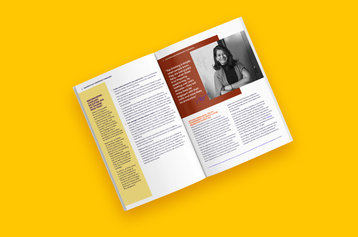
Reimbursement has become more ubiquitous in the workplace, especially with the rise of remote work. Properly managing reimbursement and taxes can raise questions, so we’ve compiled some of the more frequently asked questions along with specifics on remote work vs travel reimbursement.
Remote Work vs Travel Reimbursement
Remote worker reimbursement
One of the latest changes to the workplace is the rise of remote work. An example of one of the issues created by remote work is the question of who pays for the expenses. Employers might be surprised to know that there are laws on the books in certain states requiring employers to provide workers reimbursement for business expenses. Ignoring these laws could lead employers to compliance issues for remote work.
Federal law requires employee business expense reimbursement only in a narrow set of circumstances. However, several states, the District of Columbia, and the city of Seattle have laws requiring organizations to pay their employees for any “necessary work-related expenses.” In many instances, this can include the cost of:
- Home Internet access
- Cell phones
- Even utilities for home offices
Many employers not required to cover business expenses elect to do so voluntarily. However, employers should be careful that violating the terms of the agreement can lead to potential liability for breach of contract claims.
Federal
In general, federal law doesn’t require that employers reimburse employees for business expenses. However, the Fair Labor Standards Act (FLSA) requires employers to pay workers for business expenses when a worker’s compensation drops below the federal minimum wage.
California
California employers must reimburse employees for:
- “All necessary expenditures or losses incurred by the employee” while performing their job or
- While acting in “obedience to the directions of the employer.”
- The Golden State law notes explicitly that “necessary expenditures or losses” includes all “reasonable costs.”
According to California-based employment law attorney Mark Spring, employers should expect to pay the “basic costs” of Internet usage, personal cell phones, laptops, and “some utilities” for remote workers.
Illinois
Illinois uses language in its employee business expense reimbursement law similar to that found in California’s law. In Illinois, employers must reimburse employees for “necessary expenditures or losses incurred by the employee within the employee’s scope of employment and directly related to services performed for the employer.”
The cost of Internet access and phone bills, when used for remote work, are generally viewed as “necessary expenditures.”
While Illinois’ law is patterned after California’s law, there are differences. Employers can specify allowable amounts for the expenditures. Additionally, employees must submit requests for expense reimbursement within 30 calendar days of incurring the expense.
Iowa
Iowa’s reimbursement statute discusses “authorized,” not “necessary” expenses and requires that employers pay employees within a specific timeframe.
Authorized employee business expenses must be reimbursed within 30 days. If the employer refuses to pay all or part of each claim, the employer must provide the employee with written justification for the refusal within 30 days.
Massachusetts
Massachusetts law does not expressly require that remote work expenses be reimbursed. However, similar to the FLSA, employers cannot shift costs to employers that cause their earnings to fall below the minimum wage.
According to guidance by the Massachusetts Attorney General’s Office, “Employers should reimburse expenses that are “unavoidable and necessary” for employees to fulfill their job responsibilities.”
Legal experts say potential reimbursable costs could include the cost of a computer, the purchase or upgrade of home internet access, or the purchase or upgrade of cellular telephone service.
Minnesota
Minnesota requires reimbursement if employee expenses fall below the minimum wage. It also requires that the cost of specific equipment be reimbursed in full at the end of employment.
Montana
Montana’s employee business expense reimbursement law is similar to that of California’s and Illinois’. It requires that employers reimburse employees for all “necessary expenditures or losses” or “business expenses” incurred by the employee in direct consequence or discharge of their duties.
New Hampshire
Under New Hampshire law, employers must reimburse employees for employment-related expenses unless:
- The costs are the type that are usually carried by the employee as a precondition of employment, or
- The employer pays for the expenses through wages, cash advances, etc.
Generally, reimbursable expenses are those that benefit the employer. Legal experts say such expenses “include mileage for the use of the employee’s vehicle for work purposes, costs for fuel or maintenance of the employer’s vehicles, replacement parts for the employer’s equipment, or costs incurred to protect the employer’s property, such as protective packaging for shipping employer-owned equipment.”
New York
If there’s an agreement that outlines employee expense reimbursement, then New York employers must compensate employees within 30 days of the reimbursement becoming due, which is typically the date that the employee submitted the expense reimbursement request.
North Dakota
Employers must reimburse employees for business expenses or losses resulting from the “discharge of the employee’s duties” or the employee’s “obedience to the directions of the employer.”
Pennsylvania
In Pennsylvania, unreimbursed employee expenses are deductive under state personal income tax law.
South Dakota
Employers must reimburse all necessary expenses or losses the employee incurred while performing their duties or while obeying the employer’s direction.
Washington State
State law does not require employee reimbursements; they’re at the employer’s discretion. Unreimbursed employee expenses may be tax-deductible. However, Seattle has an employee expense reimbursement requirement.
Seattle
Employers must pay employees all compensation owed to them under the city’s wage theft law. Seattle law includes employer business expenses in the definition of compensation.
Washington, D.C.
Employers must reimburse the purchase and maintenance costs of tools that the employer requires to perform work.
How do I determine travel expense reimbursement?
Because reimbursing an employee’s travel expenses isn’t mandated by federal law, in most states you’re free to determine which specific expenses you’ll reimburse.
Advantages of Reimbursement
Travel expenses, and reimbursement of employees’ travel expenses, are considered a legitimate business expense that can be deducted from a company’s income taxes. For this reason, it can be advantageous to both employers and employees to have a reimbursement policy for travel expenses.
Types of Expenses
As the granter of optional reimbursements, you can decide if you’ll reimburse employees’ business related travel expenses, and which ones specifically. That said, you need to make sure that you’re treating employees equally when it comes to reimbursements, so establishing a clear reimbursement policy is advisable.
Examples
- You could choose to limit your reimbursements to necessary equipment, materials, and transportation costs.
- Or, you could choose to include other expenses that are naturally incurred during travel such as, eating out, lodging, etc.
Whichever expenses you do reimburse, get specific about when and where business expenses may be incurred.
For example, you could cover an employee’s meals from the minute they get on the plane to depart until the minute they get off the plane on their return. You could even agree to an additional meal at the airport before they board the plane. Or, you could limit their reimbursements to one meal per day while staying at their destination. Consider whether you’ll reimburse airfare only, or taxis, buses, and trains as well.
Are Expense Reimbursements Taxable?
Typically, when your company sends you on the road, there are certain amenities they will help you pay for. But are these expense reimbursements taxable? As with many HR questions, the answer is yes and no.
In most cases, expense reimbursements are not taxable. However, there are exceptions. The best way to comply with the IRS’ rules is to have a professional accountant create an expense reimbursement procedures guide. A proper protocol should be established for employers and employees for documenting, submitting, and reimbursing business-related expenses.
To create a detailed plan, organizations need to understand the types of expenses and how the IRS classifies them.
Common Business Expenses
To comply with IRS rules and regulations, the below expenses must have a direct connection to business functions. Also, each purchase must have the exact amount, time, and place.
Meals
Meals are often a significant business expense for many companies. They count as an expense if they are directly connected to business activities. Here are a couple of likely scenarios:
- An employee takes a client out to lunch to discuss new products and services.
- An employee is traveling for work and pays for meals while on the road.
Employees who purchase meals that are connected to company functions should expect to be reimbursed for the total cost of the meal. It’s essential for employees to keep all receipts for company records and reimbursement procedures.
Supplies and Equipment
Employees may need to purchase supplies and equipment to get the job done– are these reimbursements taxable? Typically, this occurs when an employee is away from the office and requires additional resources to complete their work. For example:
An employee is out of town for a business meeting and needs more binders for his presentation.
An employee is on a job site and needs to purchase new safety glasses and work gloves to continue working.
Travel
Employees who travel often, such as sales professionals and service technicians, incur several travel-related expenses. But are these reimbursements taxable? Companies typically set a standard allowance for travel expenses to help regulate purchases. A common daily allowance is around $250 daily allowance to cover food, hotel, and car rental.
Most fees associated with work travel are reimbursable expenses, because according to the IRS they are, “helpful and appropriate for the business.” For more information about work-related travel expenses, check out the IRS Publication 463.
Is travel reimbursement considered income?
Travel expenses are not considered income as long as they are appropriately documented as expenses. This is where a written expense protocol is essential. If travel expenses are incorrectly logged, they may face tax implications.
Moving
Employees who relocate to new cities for work are often reimbursed for moving expenses. Moving accumulates several fees, including packing materials, transportation, and lodging to name a few. However, it’s important to note that employees are not reimbursed for moving the same way as other business-related expenses. So are these expense reimbursements taxable?
Are moving expense reimbursements taxable income?
Unlike travel and other ordinary business expenses, moving reimbursements do count as taxable income. They are taxable because employer reimbursements are paid through payroll. This law came into effect in 2018 when moving expenses were no longer eligible as a tax-free perk.
Is footwear considered part of a uniform that is subject to employer reimbursement?
Sometimes. The Occupational Safety and Health Administration (OSHA) requires employers to provide Personal Protective Equipment (PPE) to workers. PPE includes any gear that minimizes risk of injury to workers while performing their duties. Depending on the work being done, PPE can include: hard hats, gloves, safety glasses, respirators, and protective eye or foot gear.
Examples of Protective Footwear
- Firefighters’ boots
- Steel-toed boots
- Metatarsal protectors
- Slip-resistant treaded shoes
- Payment exceptions
The most common exception to this rule is granted to jobs that require non-specialty protective footwear (including steel-toed or slip-resistant shoes) when the employer allows such gear to be worn off of the job site. For instance, a restaurant can require employees to wear slip-resistant treaded shoes without providing them, as long as employees are permitted to wear their shoes home. The idea behind this exception is that shoes are a very personal item that workers are likely to use out of the workplace.
Final Tips
It’s important to establish a clear reimbursement policy and make sure your employees know what is and isn’t eligible. Before an employee goes on a business trip, it’s a good idea to review not only what is eligible for reimbursement, but also the proper way to document and collect receipts to ensure that the reimbursement process goes smoothly once they’ve return.






